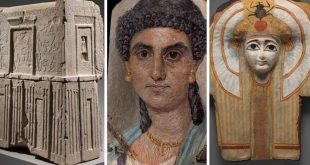M. Ashraf Al-Bayoumi*
First Encounter with America’s Racism:
My first encounter with racism against people of color in the United States occurred 65 years ago. It was both a shocking and a funny experience. I was a 20-year-old young man who had just arrived from Alexandria, Egypt by ship, followed by a train ride to Jacksonville, Florida, and then another train to the capital, Tallahassee. It was August and the heat was overbearing and what made it more painful was my wearing of a wool suit with a vest, in compliance with the usual warnings to guard against the cold of foreign lands,.(“Belad Barra”). The train supervisor directed me to a dirty and unaired coach. I was very angry when I realized that all the occupants were black passengers and moved immediately to a cleaner, air-conditioned coach. A shock was awaiting me when I arrived at the Tallahassee railway station, as the station was decrepit. I was amazed at the sight, considering it was the capital of the state of Florida. Sweat was pouring down my brow and I was very thirsty, so I ran towards water fountains that provided two options: one with a sign labeled “White” and the other with a sign that read “Colored”. As I had been influenced by the sensational publicity that represented America as a wonderland, I immediately chose the fountain entitled “Colored” thinking that I would be treated to colorful cold water of either purple, blue or orange. I was surprised that the water was colorless and warm. I was shocked when I realized the significance of the signs “Colored” and “White, which were mounted at the doors and the rest rooms of the station. They represented Segregation. My shock was accompanied with a smile as I confronted my naiveté and ignorance, having believed that President Lincoln had freed the slaves and eliminated racism in America!!
Evolution of my Knowledge of Racism:
At Florida State University I immediately became immersed in my graduate studies in Chemistry. All students at this university were white, the presence of individuals of African descent was limited to those involved in cleaning and other services. There was another university in Tallahassee referred to as the “Negro College” for “Negros”, as black Americans were regularly called then. I didn’t experience racism in the university. Outside the university however, I was sometimes subjected to gazes of disdain and contempt from citizens who identified me as an American black. My personal position then was to condemn segregation and discrimination, but at the same time I disowned being an American black and I proudly emphasized my Egyptian and Arabic identity.
I have personally witnessed several examples and scenes of white disdain of blacks, for example, this 20-year-old white young man calling a black man with gray hair “Boy come here” and then ordering him to do a particular service. I often saw the fear in the eyes of blacks when confronted with traffic police.
I was pleased with how Black Americans that I met were very happy to know that I was an Egyptian from the country of Gamal Abdel Nasser whom they considered “the champion of the weak and oppressed”.
When the civil rights movement began in the early sixties, many African-Americans started defying rules of segregation, going to cafés from which they were banned. I became involved in this defiance when I was sometimes refused service. At this time my awareness of racism had evolved, and I refused to say that I was not a black American and I insisted on staying and asking for service while strongly objecting to abhorrent racism. I also rejected my neighbors’ objection for allowing my daughter’s black nanny to sit in the front seat, causing some threats. It was from this smart, politicized black woman that I learned much about the struggle of Black people and their culture in the USA
Racism in Historical and Political Perspective:
Knowledge of historical, political and economic aspects, and the culture of racism, is necessary to combat the pandemic of racism. This enabled me to evolve as an active combatant of racism and a friend of the black student community at Michigan State University (MSU), where I was a professor for many years. It was at MSU where some students and faculty started a long national divesture campaign against investments in Apartheid South Africa. The success of this campaign, which spread to many other US universities received gratitude from Nelson Mandela when he was freed from his long imprisonment. Simultaneously, he condemned the apartheid Zionist system in Palestine by underscoring the slogan “Same Struggle, Many Fronts” which we repeated in our demonstrations.
There were, important milestones in the movement for social justice in America, the most important of which was the Civil Rights Act under President Lyndon Johnson. This caused the southern states to shift from supporters of Johnson’s Democratic Party to supporters of the Republican Party. reversing a previous situation in which the southern states were against the Republican Party of Lincoln who led the Civil War against the South and was recognized as a “slave liberator”, even though he was a supporter of the separation of blacks from whites as an apartheid system, or their export to an African land as an alternative.
It became clear to me that allowing Blacks to go to white colleges and to have housing in areas inhabited by Whites and avoiding the use of derogatory terms such as “negros” or “niggers”, and even electing a Black president, does not mean that racism has been eliminated. In fact Racism is alive and well.
The Racism Complex: Discrimination/Colonialism/Capitalist Economy:
A detailed dissection of Racism is beyond the scope of this short commentary. It will suffice to emphasise certain basic points:
First: The looting of others, Violence and Racism represent a triad in the history of imperialism and colonialism. As the primary goal of colonialism is to plunder and dominate, the use of force, violence and even genocide becomes an integral component of colonialism. Racism is the third indispensable component that represents a form of rationalization (including use of religion) for despising, killing, torturing, raping, lynching and exploiting the Other without feeling guilty.. That was the fate of the indigenous people of America whom Columbus called “Red Indians”, The scourge of slavery was born as a basic system of capitalism when Europeans usurped the African continent and made slavery a mainstay of plantations for cotton, sugar cane, tobacco and rubber, and then the textile industry and many other industries that became pillars of world trade.
Second: Combating Racism requires radical structural change, including massive reparations for the sweat and blood that blacks have shed in building America as former slaves and now as a vulnerable segment of American society.
Third: The change must be accompanied by a continuous drive to spread knowledge about the history of slavery and its multiple negative impacts, ranging from the socio-economic to the psychological. Changes such as removing statues of racist pioneers or improving white discourse towards blacks are no more than band aid treatments of a deeply ingrained disease.
The transformation of the current Intifada into an organized and sustained effort to force the needed comprehensive change is not an easy task, One should not underestimate the ability of the established authority to break up the movement and divert it from its basic goals as happened repeatedly before. Reformist strategies leading to cosmetic changes such as partial changes in the security apparatus and prisons, or punishment of the killers of George Floyd are not enough.
Fourth; The pandemic of Racism has afflicted All to various degrees and forms, including our Arab nation, and therefore we must also confront manifestations of Racism in our own societies. In addition, enslaving others has not been limited to those who look different from “Us”. in fact, the first slaves imported into American colonies in 1619 were one hundred white Irish children, not to mention the thriving trade of European Slavs to the middle East during the 11th century. As a matter of fact the word Slave derives from that trade in Slavs.
Fifth; the scenes of violence and the victims that we watch on TV accounts of the US Intifada are the same as those we have seen for decades in Palestine. No surprise here, for the disease of Racism, and the goals of domination are likewise the same. In fact, the Israeli coach is sometimes the same coach who trained hundreds of American policemen.
Sixth; The class dimension of Racism must not be overlooked. The interests of some Black leaders whose economic and social situation has improved, thanks to the civil rights movement, and the long struggle against Racism, have coincided with the ruling elite. Moreover, their suggested methods of containment and compromise run counter to the interest of the majority of Black communities.
* Retired Professor of Physical Chemistry (Alexandria and Michigan State Universities






